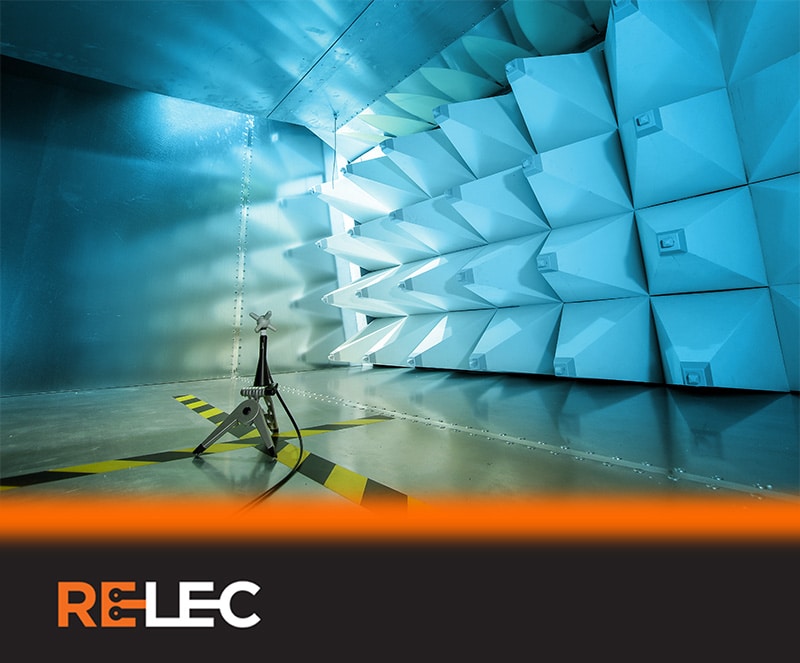EN61000-4-4 & EN61000-4-5 Dissected: A Surge-ival Guide
18th July 2023Share This Post
Share This Post
EN61000-4-4 & EN61000-4-5
Continuing our look at the EN61000 series of immunity standards, this month we’re going to give you 2 for the price of one. Both of these standards are related to surges and transients we see in everyday activity and can have a big effect on the performance of electronic systems. This is particularly applicable to power supplies, which their inputs typically coming from the mains.
EN61000-4-4 (Electrical fast transients) and EN61000-4-5 (Surges) are two separate international standards related to electromagnetic compatibility (EMC) and transient immunity testing. Although they address different types of transient disturbances, they are interconnected in the broader context of ensuring the overall EMC robustness of electronic devices and systems.
Let’s look at the source of these 2 distinct phenomena…
What are Electrical Fast Transients (EFTs)? EN61000-4-4
Electrical fast transients (EFTs) are sudden and brief disturbances in the electrical power that occur due to various factors, such as switching events, lightning strikes, or other electrical disturbances. These transients are characterized by their short duration and high-frequency energy content. EFTs can induce unwanted voltage or current fluctuations in electronic circuits, which can disrupt the normal operation of devices and potentially lead to malfunctions or failures.
Generation of EFTs in the Real World:
EFTs can be generated in the real world through different mechanisms:
Switching Events
When electrical devices are switched on or off, they can generate abrupt changes in voltage or current, resulting in transient disturbances.
Lightning Strikes
Lightning carries immense energy and can cause EFTs when it strikes power lines or other conductive paths. The high voltage and current associated with lightning can create significant transient disturbances.
Electrical Interference
Various electronic devices, such as motors, relays, or power electronics, can introduce electrical noise and disturbances into the power supply system. These disturbances can propagate as EFTs and affect other connected devices.
EN61000-4-4 Voltage waveform and energy level
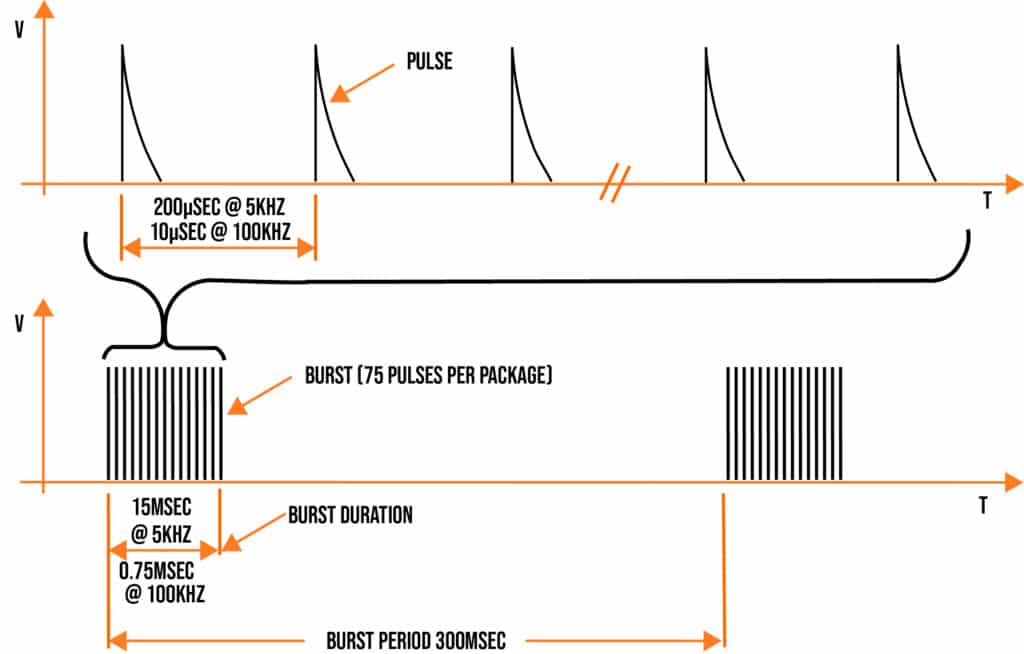
The waveform of a single transient is characterised by a rise time of 5nS and rise to half value of 50nS with a maximum energy of 4mJ at 2kV into a 50-ohm load. The repetition frequency is a function of the test level with a burst duration of 15mSand period of 300mS.
EN61000-4-4 Test Levels
All of the EFT levels shown below are derived from a source with a 50-ohm output impedance:
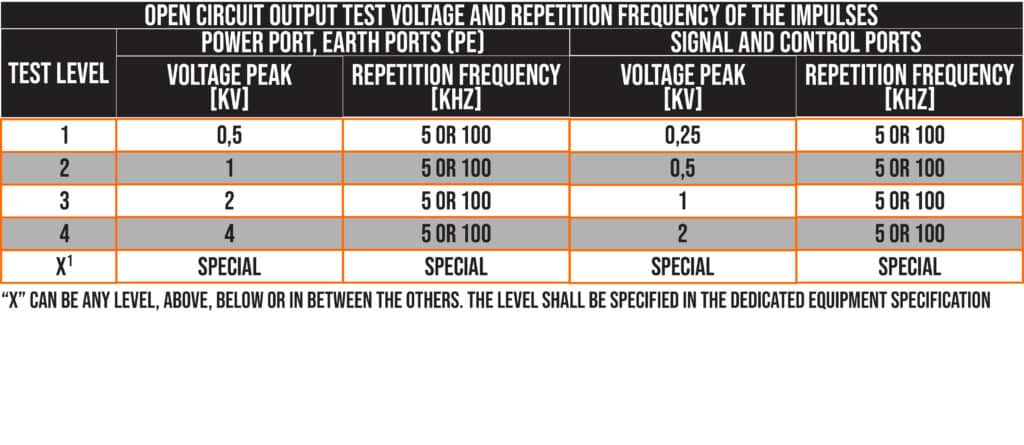
Level 1
Well-Protected Environment
A computer room may represent this environment.
Level 2
Protected Environment
The control room or terminal room of industrial and electrical plants may represent this environment.
Level 3
Typical Industrial Environment
The area of industrial process equipment may represent this environment.
Level 4
Severe Industrial Environment
The outdoor area of industrial process equipment where no specific installation practice has been adopted, power plants, the relay rooms of open-air high voltage substations.
Level x
Special Situations
The minor or major electromagnetic separation of disturbance sources from equipment circuits, cables, lines etc, and the quality of the installations may require the use of a higher or lower environmental level than those described above. It should be noted that equipment lines of a higher environmental level can penetrate a lower severity environment.
What are Electrical Surges? EN61000-4-5
Electrical surges, also known as voltage surges or power surges, are sudden and brief increases in voltage or current in an electrical system. They can occur due to various factors, such as lightning strikes, switching operations, or faults in the power grid. Surges can carry a significant amount of energy and can potentially damage or disrupt electronic devices connected to the power supply.
Generation of Electrical Surges in the Real World:
Electrical surges can be generated in the real world through different mechanisms:
Lightning Strikes
Lightning is a natural phenomenon that carries a massive amount of electrical energy. When lightning strikes a power line or other conductive path, it can induce a surge in the electrical system. The surge can propagate through the power lines and affect connected devices.
Switching Operations
The switching on or off of electrical devices, such as air conditioners, refrigerators, or large motors, can cause sudden changes in voltage or current. These abrupt changes can create surges that propagate through the electrical system.
Power Grid Faults
Faults in the power grid, such as short circuits or equipment failures, can lead to voltage or current irregularities. These irregularities can manifest as surges that impact the connected devices.
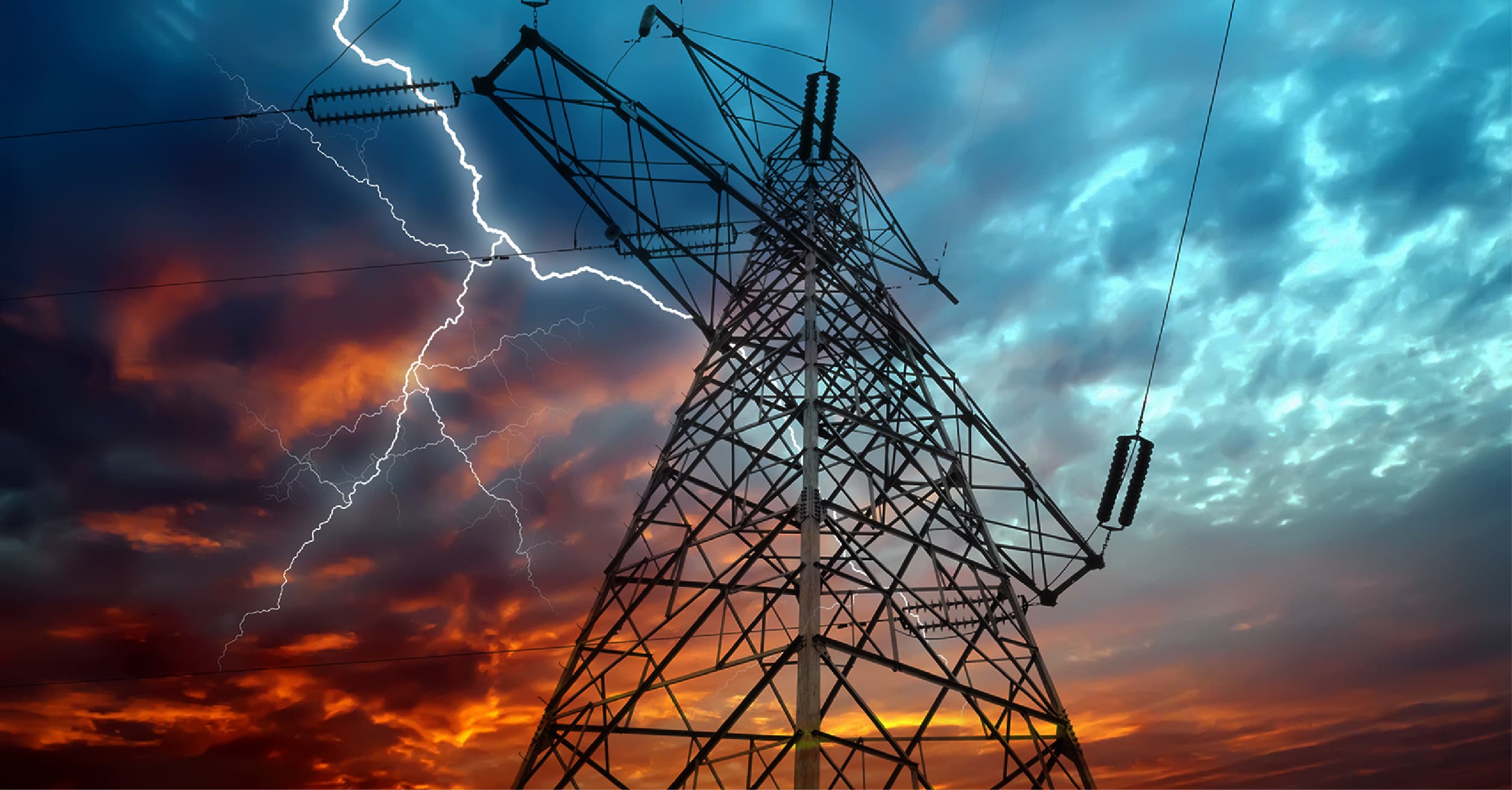
Generation of Electrical Surges in the Real World:
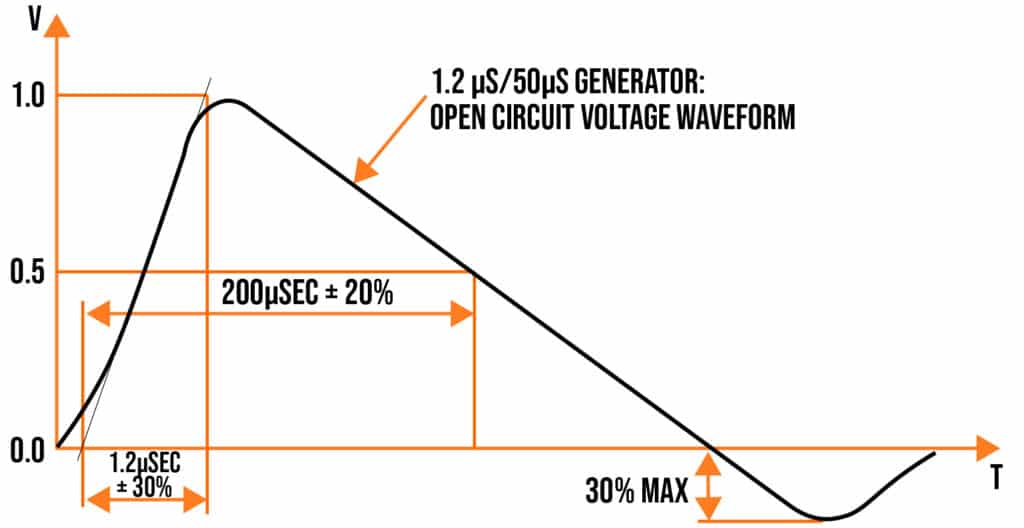
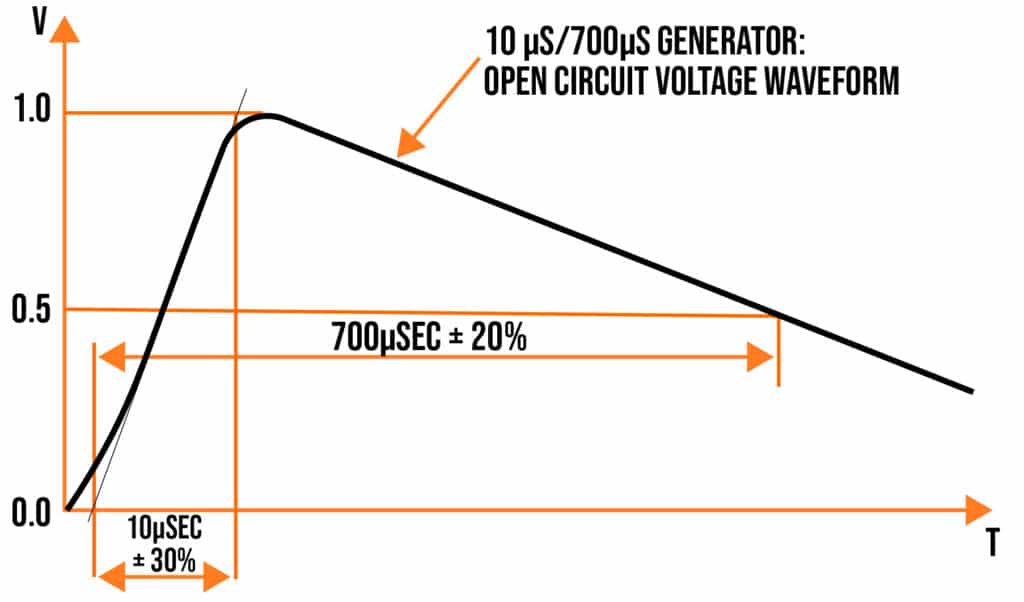
The EN61000-4-5 standard specifies two different open-circuit surge waveforms, a) with a rise time of 1.2uS and time to half value of 50uS from a 2-ohm source for line-to-line coupling and 12 ohms for line to earth and b) with a rise time of 10uS and time to half value of 700uS from a 42 ohm source for both line to line & line to earth.
Test levels

Level 1
Equipment installed in low-voltage mains supply systems, such as information technology equipment, communication equipment, and other equipment with similar immunity requirements.
Level 2
Equipment installed in the primary and secondary electrical supply systems of commercial and industrial premises. It includes equipment such as building automation and control systems, industrial machinery, and other equipment operating in such environments.
Level 3
Equipment installed in the power supply network infrastructure, including electricity generation, transmission, and distribution systems. It covers equipment like power generation plants, substations, power transformers, and other related electrical infrastructure equipment.
Level 4
Equipment installed in heavy industrial environments, where higher levels of immunity are required due to the severity of transient conditions. It includes equipment exposed to extreme conditions, such as heavy machinery, high-power equipment, and installations in industrial manufacturing environments.
Designing for surges and transients
When designing equipment to meet the EN61000-4-4 (Electrical Fast Transients) and EN61000-4-5 (Surge) standards, engineers should consider the following key aspects:
For EN61000-4-4 (Electrical Fast Transients):
Component Selection
Choose components that have sufficient voltage and current ratings to withstand the expected transients. Select components with fast response times and low parasitic capacitance and inductance. Relec Electronics will help you in this regard.
PCB Layout
Optimize the PCB layout to minimize the loop area of sensitive traces. Separate high-voltage and low-voltage circuitry and ensure proper grounding techniques to reduce the impact of transients.
Filtering and Decoupling
Incorporate appropriate filters, such as transient voltage suppressors (TVS), RC snubbers, and line filters, to attenuate transient voltages and prevent them from reaching sensitive circuitry. Use decoupling capacitors to stabilize power supply voltages.
Shielding and Grounding
Implement effective shielding techniques to minimize the coupling of transients. Use proper grounding techniques, including star grounding, to maintain a low impedance path for transient currents.
Testing and Verification
Perform thorough testing using transient generators to ensure compliance with the specified test levels. Test the equipment in different operating conditions and environments to ensure robustness.
For EN61000-4-5 (Electrical surges):
Component Selection
Choose components that have sufficient voltage and current ratings to withstand the expected transients. Select components with fast response times and low parasitic capacitance and inductance. Relec Electronics will help you in this regard.
Protection Devices
Utilize surge protection devices, such as gas discharge tubes (GDT), metal oxide varistors (MOV), and transient voltage suppressors (TVS), at vulnerable points to divert excessive surge energy away from sensitive components.
Grounding and Bonding
Establish proper grounding and bonding practices to ensure low impedance paths for surge currents. Employ surge-specific grounding techniques, such as equipotential bonding and grounding conductors, to minimize potential differences.
Isolation and Separation
Implement appropriate isolation techniques to prevent surge propagation between different sections of the equipment. Use isolation transformers or optocouplers to isolate sensitive circuitry from the surge source.
Circuit Design and Filtering
Employ robust circuit designs that can withstand high-energy surges. Implement filtering techniques, such as low-pass filters and LC filters, to attenuate high-frequency components of surges.
Compliance Testing
Conduct thorough surge immunity testing using surge generators to validate the equipment’s compliance with the specified test levels. Test the equipment with various surge waveforms and at different input and output interfaces.
Related Content
In today’s technologically driven world, electromagnetic compatibility (EMC) plays a crucial role in ensuring the smooth operation of electronic devices…
SHARE
sign up for our newsletter
Enter your email address below
LET’S MAKE THIS EASY. CALL 01929 555 700
why choose relec?
-
Faster
Our aim is to get back to you with an initial response within the hour.
-
Attention to detail
We pride ourselves on getting you the right product, at the right price and on time.
-
New ideas
We are constantly looking for latest technology and products for your applications.
-
Beyond standard
It’s not just about the product. Our service goes way beyond the norm.
-
Easy
We want to make your life as simple as it can be. Call us to find out what we can offer.









